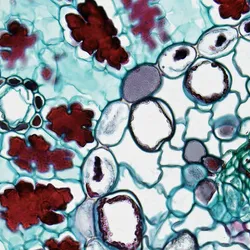Background
Single-cell RNA sequencing (scRNA-seq) has revolutionised our understanding of human tissue biology by enabling the characterisation of cellular diversity and function at unprecedented resolution. To date, billions of cells have been profiled across organs, developmental stages, disease states, and populations. Large-scale tissue profiling and data integration efforts have produced tissue-specific atlases such as the Pan-GI Cell Atlas [1], led by the primary supervisor of this project, Dr Amanda Oliver and cross-tissue atlases, focused on profiling specific cell lineages across the body [2, 3].
This PhD project will extend these efforts by constructing a unified atlas of mucosal barrier tissues, such as the lung and gut. These organs are critical interfaces with the external environment, balancing protection against pathogens and toxins with essential physiological functions including respiration, digestion, and symbiosis with the microbiome.
- Oliver, A.J., et al. Single-cell integration reveals metaplasia in inflammatory gut diseases. Nature 635, 699–707 (2024). https://doi.org/10.1038/s41586-024-07571-1
- C. Domínguez Conde, C., et al. Cross-tissue immune cell analysis reveals tissue-specific features in humans. Science 376, eabl5197 (2022). DOI:10.1126/science.abl5197
- Barnett, S.N., An organotypic atlas of human vascular cells. Nat Med 30, 3468–3481 (2024). https://doi.org/10.1038/s41591-024-03376-x
Aim
By pooling and harmonising single-cell datasets across barrier tissues, the student will:
- Identify conserved cellular programs and regulatory networks that underpin shared barrier functions, especially related to immunity.
- Discover tissue-specific specialisations that enable organs to meet unique physiological and environmental demands.
- Integrate multi-modal data, including spatial transcriptomics and metagenomics, to map cellular niches and their interactions with the microbiome.
Approach
Candidates are expected to have a strong bioinformatics background and will gain extensive experience with large-scale data integration as well as deep biological knowledge of barrier tissues. The project will require the student to adapt and streamline integration, quality control, annotation, and spatial mapping methods into a robust pipeline capable of handling millions of cells across thousands of samples and hundreds of donors. Once the atlas is assembled, advanced computational approaches, including gene regulatory network inference, foundation models, and neural networks, will be applied to uncover novel biological insights.
Outcome
By combining large-scale single-cell data with spatial and microbiome profiling, this project will generate the first cross-tissue single-cell atlas of barrier biology. The outcomes will provide mechanistic insights into how barrier tissues maintain homeostasis and adapt to unique environmental challenges, laying the foundation for understanding diseases of barrier dysfunction such as inflammatory bowel disease and chronic respiratory conditions.
